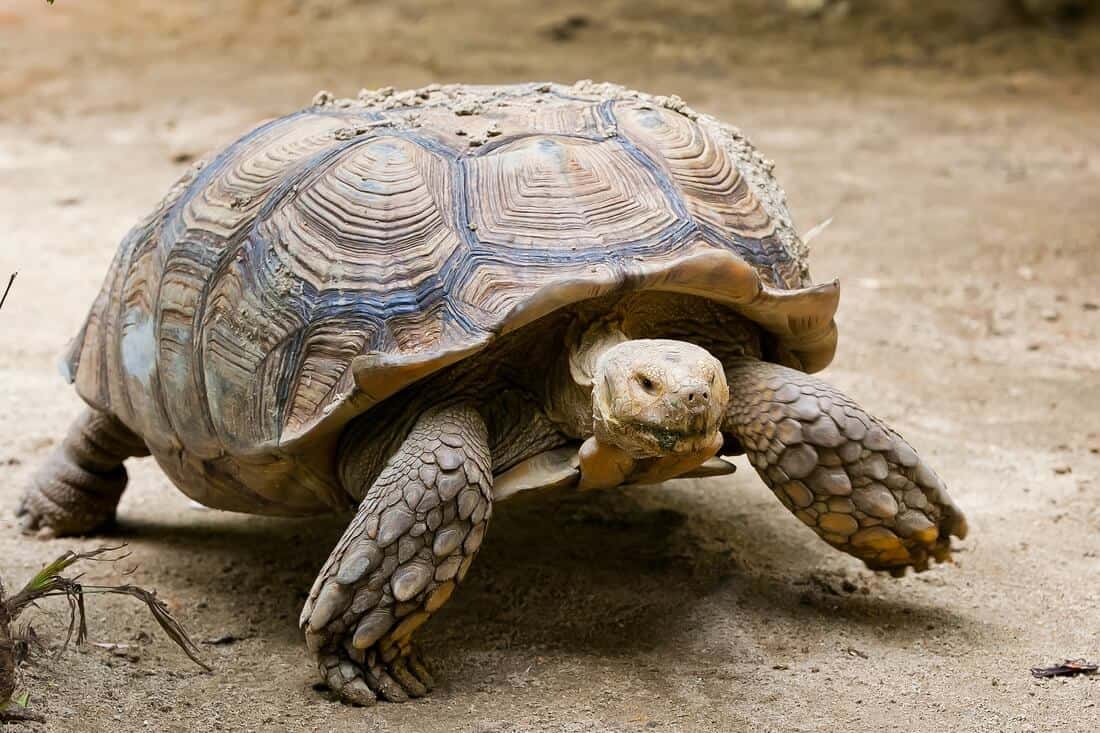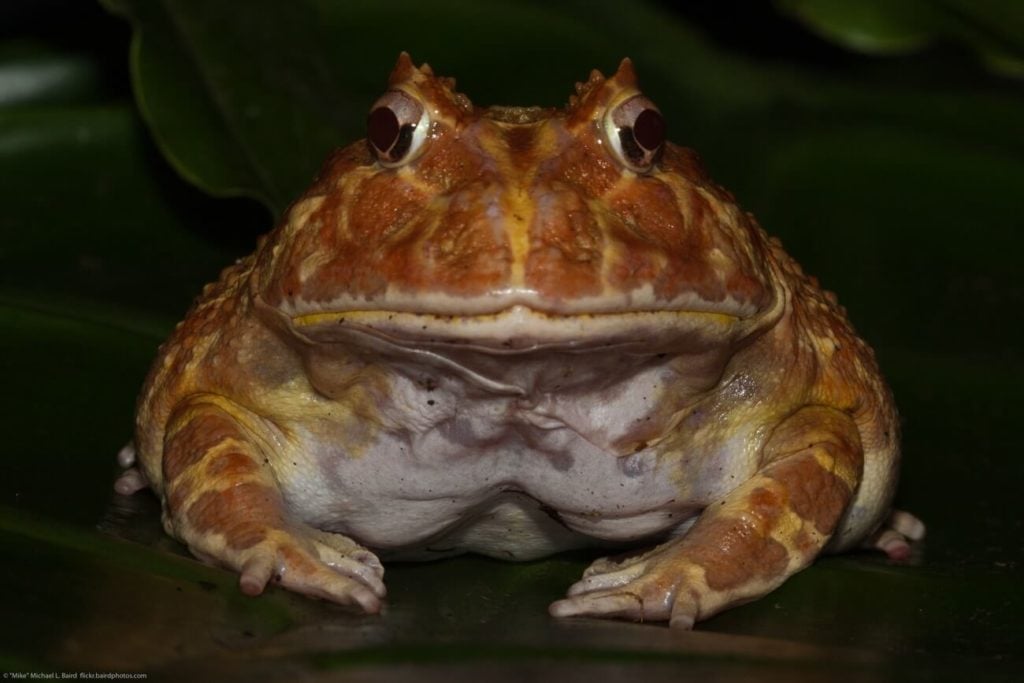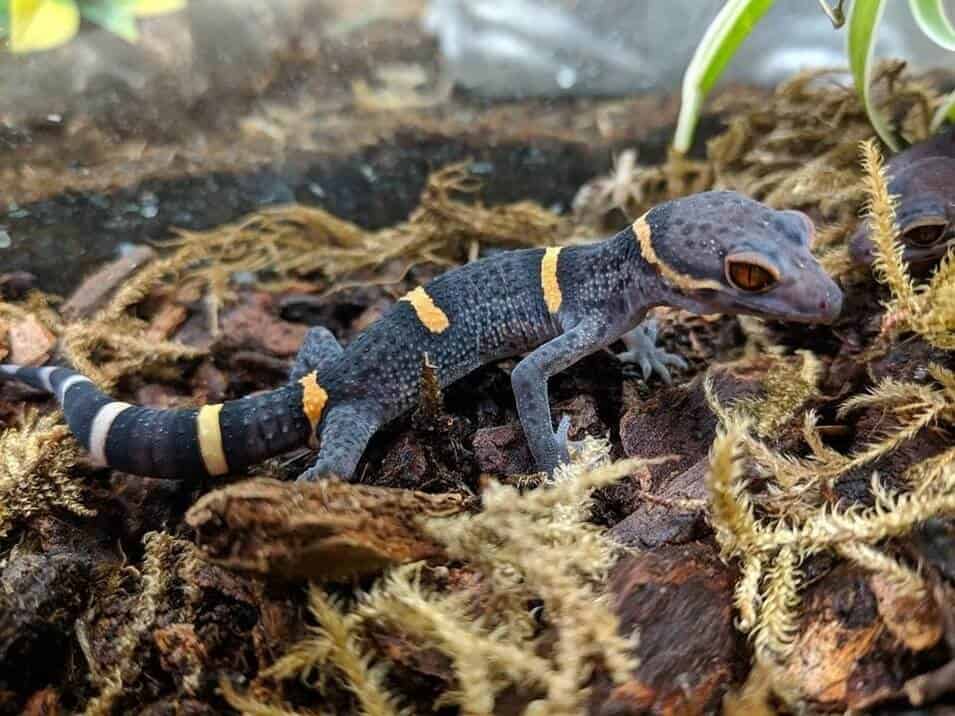Elongated tortoises are interesting reptiles that most people don’t know a whole lot about. But trust us, there’s a lot to like about this unique species!
This guide will teach you the fundamentals of elongated tortoise care. You’ll learn about their size, diet, minimum enclosure size, and a whole lot more.
Table of Contents
Species Summary
The elongated tortoise (Indotestudo elongata) is a gentle and curious creature. They are a medium-sized tortoise species. While not as large as some of its bigger cousins, elongated tortoises still need ample room to thrive.
These reptiles are originally found throughout Southeast Asia and India. They don’t swim, so most reside in dense upland forests. They’re native to tropical environments and prefer to live around as many plants as possible!
Elongated tortoises aren’t the most well-known species out there, but they’re a beloved species among reptile-lovers. They do best in temperate climates and prefer to have large outdoor enclosures to explore.
Appearance & Colors
This tortoise’s common name is the perfect description of their body shape. Compared to other tortoises, this species is longer and more compressed. They don’t have that dramatic rounded shell that you might be familiar with.
Instead, these tortoises are long, short, and stout.
The scutes are relatively flat. Most of the shell features a tannish-yellow color that looks quite nice in the right lighting. Splotches have dark blotches of black with random patterns, creating an overall finish that’s beautiful yet subtle.
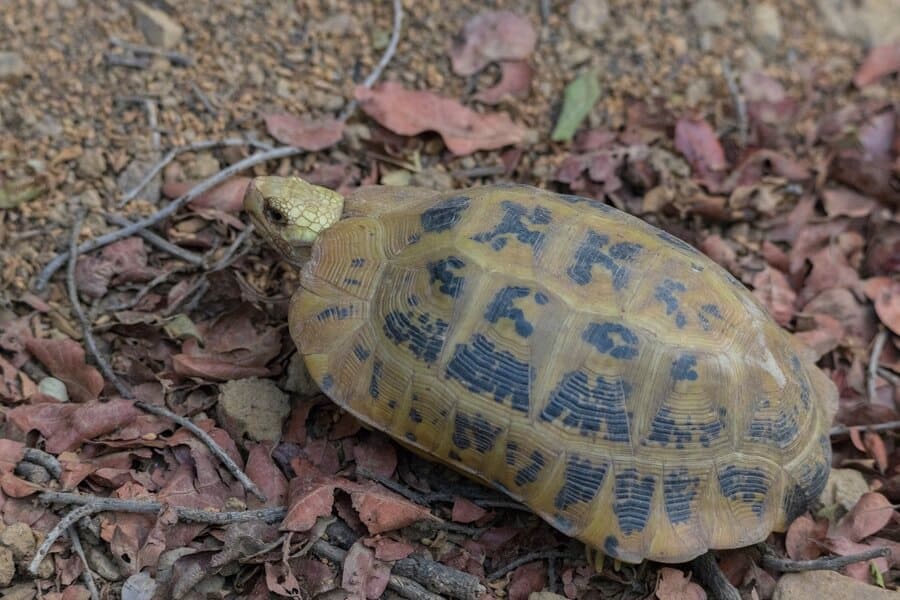
On the front legs, elongated tortoises have large protective scales. However, you’ll notice that the hind legs are relatively smooth and agile.
Back up front, both males and females sport pinkish coloration around the noses. The head is round and bulbous (much like other tortoises). Meanwhile, the skin is wrinkly and covered in pale tan.
Expert Tip: Females also have long curved claws, which many zoologists believe they developed to help with nest building!
There are a few differences between males and females. Beyond the aforementioned hind claws, females tend to be slightly wide. They also have a rounder shape, though the shell remains flatter than other species. Females are also sporting a flatter plastron in the rear.
Average Elongated Tortoise Size
On average, the average elongated tortoise size is about 12 to 14 inches. Females are more likely to reach the upper end of that size spectrum. In terms of weight, this species is usually around 7 pounds.
As a medium-sized species, elongated tortoises aren’t very challenging to manage. However, don’t let that fool you into thinking they can live in a small enclosure! This species will thrive when kept in a larger enclosure that they can explore (more on that later).
Lifespan
The average elongated tortoise lifespan is 40 to 50 years. Tortoises, as a whole, are long-lived creatures, and this species is no different!
Of course, there’s no way to guarantee how long these pet tortoises will live. Like any other captive animal, it all depends on the level of care you provide. Poorly maintained habitats and a lackluster diet can quickly lead to declining health and premature death.
Elongated Tortoise Care
Elongated tortoises care isn’t the most challenging task. However, they do have specific requirements and preferences all the same. As a species with a long lifespan, these reptiles have particular needs you must meet if you want them to live as long as possible.
The goal as an owner is always to provide the best possible life for your pet? To do that, here are some established care guidelines you should follow.
Enclosure Size
Elongated tortoises can live indoors or outside. However, there are a few considerations to think about first.
If you live in an area that experiences cold winters, you’ll need to create an indoor enclosure. Outside habitats for the warmer months are always recommended, but you’ll need to create a comfortable ecosystem inside to keep them safe during the winter.
The best kind of indoor enclosure is going to be a large plastic tub, and we’re not talking about small containers here. The enclosure needs to be at least six feet wide by eight feet long!
Expert Tip: For the sides, aim for a height of one to two feet. Many herpetology enthusiasts utilize large agricultural stock tanks due to the convenient dimensions.
Those living in a warmer region should create an outdoor pen. Elongated tortoises prefer warm temperatures year-round, so make sure that you keep an eye on the weather channel to ensure that your reptile is safe.
The same minimum habitat measurements apply here. But if you have the room, create a bigger enclosure! Elongated tortoises are adventurous creatures that like to scavenge for food in the wild. A bigger home in captivity is always welcome.
Utilize heavy bricks for the walls if you’re keeping your elongated tortoise in an outdoor enclosure. Keep things opaque so that your tortoise can’t see out of the pen and get enticed to climb out. Also, make sure that you’re using tall walls. A deep underground portion is recommended, too, to prevent them from digging their way out.
Setting Up The Inside Of Their Habitat
Whether you keep your elongated tortoise inside or out, the key to keeping your pet happy is to recreate their natural environment as closely as possible. These reptiles are used to humid forests filled with plant life.
Start by creating a floor that’s conducive to digging. Unlike other species, elongated tortoises aren’t super keen on basking in the sun. You’re more likely to see them buried under the soil rather than relaxing next to a hot lamp.
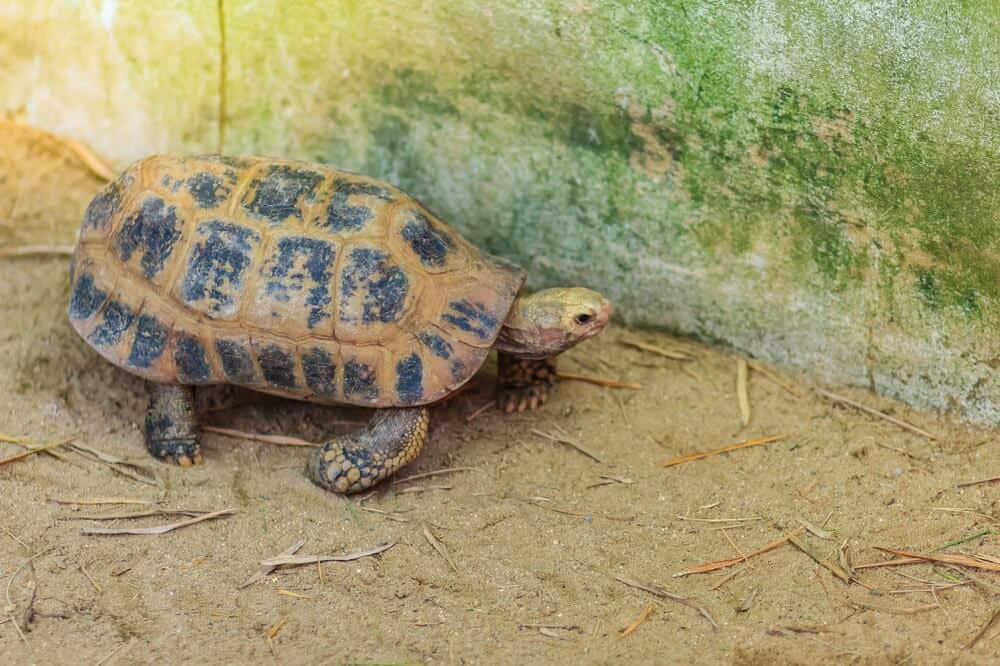
For the best results, use an absorbent material that does a good job of holding onto water. A mixture of one-part to three parts peat moss is a good option. Make sure you’re using additive-free substrates. Also, avoid anything like cedar shavings or bark. Not only do they have potential toxins, but they can pose a choking hazard.
Create a thick layer of substrate that’s about six to ten inches deep for adults. That should be more than enough depth to encourage digging!
Keep one side of the enclosure damp. You can also apply a layer of sphagnum moss and leaf litter to slow down water evaporation. The soil should be moist but not waterlogged.
Next, add plenty of tropical plants and grasses. There are no specific cultivars you need to have. But, try to keep things tropical. Furthermore, avoid any plant that might produce toxic seeds, berries, or leaves.
Expert Tip: Try to create plenty of shade spots with your plants and grasses. The more shelter from the sun your tortoise has, the better.
Of course, don’t go overboard. They still need to be able to get around comfortably!
Temperature & Lighting
Maintaining the proper temperature is one of the most important aspects of elongated tortoise care. To do this, you’ll need to be familiar with what temperatures they require during the day as well as at night.
- Ambient temperatures in the enclosure should be around 75 degrees Fahrenheit during the day.
- Nighttime temperatures can drop to about 60 to 65 degrees. But anything less than that, and you’ll need to bring them inside or utilize a ceramic heat emitter.
While they aren’t fans of basking, elongated tortoises still need a basking spot for heat regulation. In an indoor enclosure, take advantage of basking lights to raise the temperature to 85 to 90 degrees on one side of the enclosure.
Put all of your lights on timers. Elongated tortoises are most active around dusk and dawn, so that typical day and night cycle is paramount.
Another vital addition for indoor enclosures is a UVB lamp. Reptiles need UV light exposure to synthesize calcium. Otherwise, they may experience shell and bone issues!
Your UVB lamp should shine on as much of the habitat as possible. Like your standard lights, keep them on a timer.
Expert Tip: Elongated tortoises that are kept outdoors won’t need UVB lamps since they get UV exposure from the sun naturally.
Humidity
60 to 80 percent humidity is ideal for elongated tortoises. To achieve this, mist the substrate once or twice a day. The absorbent material will do a lot of the heavy lifting when creating a humid environment.
As always, don’t rely on your best guess when it comes to humidity. Invest in a high-quality hygrometer! It will gauge moisture in the air and allow you to get an accurate understanding of the humidity level inside the enclosure.
Water
Whether you have a young elongated tortoise or a full-sized adult, you need to provide a large water dish. These reptiles will use the dishes in several different ways.
Some will drink the water to stay hydrated. Others will use it to cool off and soak. You may even see your tortoise using it as a toilet!
Whatever the case may be, you need to make water accessible at all times. Use a container that matches the size of your tortoise. It should be properly sized so they can climb in and also be safe. Remember: these reptiles are not swimmers!
Expert Tip: Check on the water dish every day. Clean out any messes and replenish the supply so that they always have access to clean water.
Food & Diet
In the wild, elongated tortoises are omnivores. However, they lean on plant-based diets to survive. Most will focus on eating vegetables and fruits while reserving their hunt for carrion to once or twice a week.
Replicating a natural diet is an incredibly important part of elongated tortoise care, and is one of the best ways to ensure the health of your pet. Fortunately, this really isn’t too hard. These tortoises will eat just about anything you provide!
They will readily consume:
- Romaine lettuce
- Sweet potatoes
- Carrots
- Squash
- Zucchini
- Cucumbers
- Flowers
- Green beans
- Bananas
- Apples
- Peas
- Cantaloupe
- Earthworms
- Dandelion greens
- Pears
- Watermelon
- Thawed mice
- Crickets
That’s just a small list of what elongated tortoises can eat. The most important thing to remember is that they need variety. Create unique meals as often as possible. That way, they’ll get a wide array of nutrients and vitamins.
Expert Tip: Generally, a mix of 75 percent vegetables and 25 percent fruit is ideal. Provide high-protein foods twice a week. Every few days, sprinkle in some multivitamin and calcium powder as well for supplements.
Potential Health Issues
Like any other animal, elongated tortoises are not immune to health problems. Fortunately, many of the most common ailments are easy to avoid with proper care.
These reptiles can suffer from all of the usual health concerns. These include respiratory problems, bacterial infections, and fungus.
Respiratory problems are typically a product of improper temperature and humidity levels. It causes the respiratory tract to become inflamed, resulting in a discharge from the throat or nostrils.
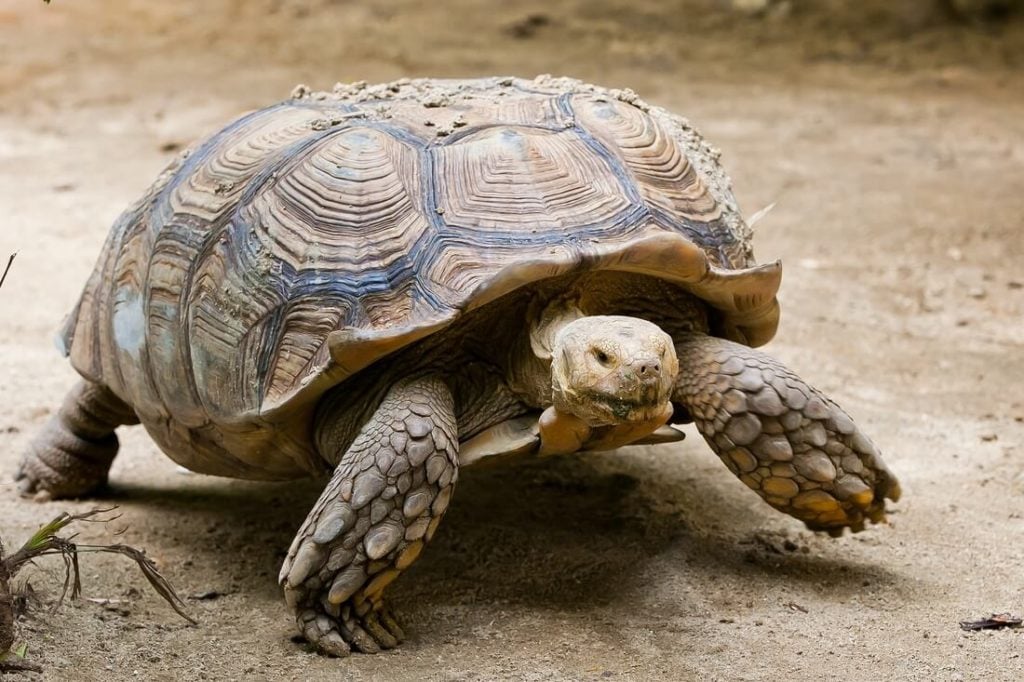
After treatment with antibiotics from your vet, you can avoid future issues by maintaining enclosure dimensions to a tee.
Bacterial infections, as well as fungal growth, are a sign of a dirty home! Infections can plague your elongated tortoise’s skin and shell. In severe cases, infections can eat right through the shell!
Needless to say, infections of any kind are dangerous. To avoid them, keep the enclosure clean. Pick up messes and spot clean regularly. About once a month, sanitize all surfaces to keep bacteria at bay.
Behavior & Temperament
Overall, elongated tortoises aren’t known for being aggressive. You can actually keep male and female pairs together without any major problems.
However, we don’t recommend keeping males together. While not always an issue, some males can get a bit territorial on occasion.
The only time you’re likely to see aggressive behavior is around breeding time. Males tend to exhibit aggressive sexual tendencies, and you might see him trying to bash the female’s shell violently.
Male elongated tortoises can also resort to biting. All of this is usually accompanied by loud vocalizing, too, creating a rather alarming scene.
Thankfully, it’s all temporary. Males will calm down and go back to their personable selves in no time.
In general, elongated tortoises are very friendly. They spend their day roaming around the enclosure looking for food and minding their business.
Expert Tip: This species can get a bit inquisitive. Make sure you keep an eye out for any openings that could lead to a potential escape. If they are curious enough to investigate a potential escape route, they’ll do it!
Handling Advice
Due to their size, elongated tortoises aren’t crazy about handling. They’ll tolerate brief moments of handling when necessary, but any excessive time off the ground is not welcome!
You shouldn’t have to worry too much about bites. This species is far too friendly to do any real damage. But if you overstep your boundaries and handle them too often, a small peck is a real possibility.
All that said, elongated tortoises do appreciate some interaction. They’re actually capable of recognizing faces! When you approach the pen, they might walk to you for a treat. Even if you don’t, these reptiles may allow you to rub their head like a dog!
As always, that level of trust comes with time. Give your elongated tortoise some space until they feel comfortable enough to come up to you. Never force things, and do your best to keep significant handling to a minimum!
Conclusion
Elongated tortoise care doesn’t have to be tricky. As long as you have a strong understanding of the basic requirements this species needs to thrive, everything will fall into place.
Even though they aren’t the most popular reptile out there, these tortoises are a whole lot of fun to own. Their unique appearance and friendly temperament makes them a great choice for just about anyone!
If you have any questions about information we covered in this care guide, you can get in touch with us by reaching out via our contact page.

